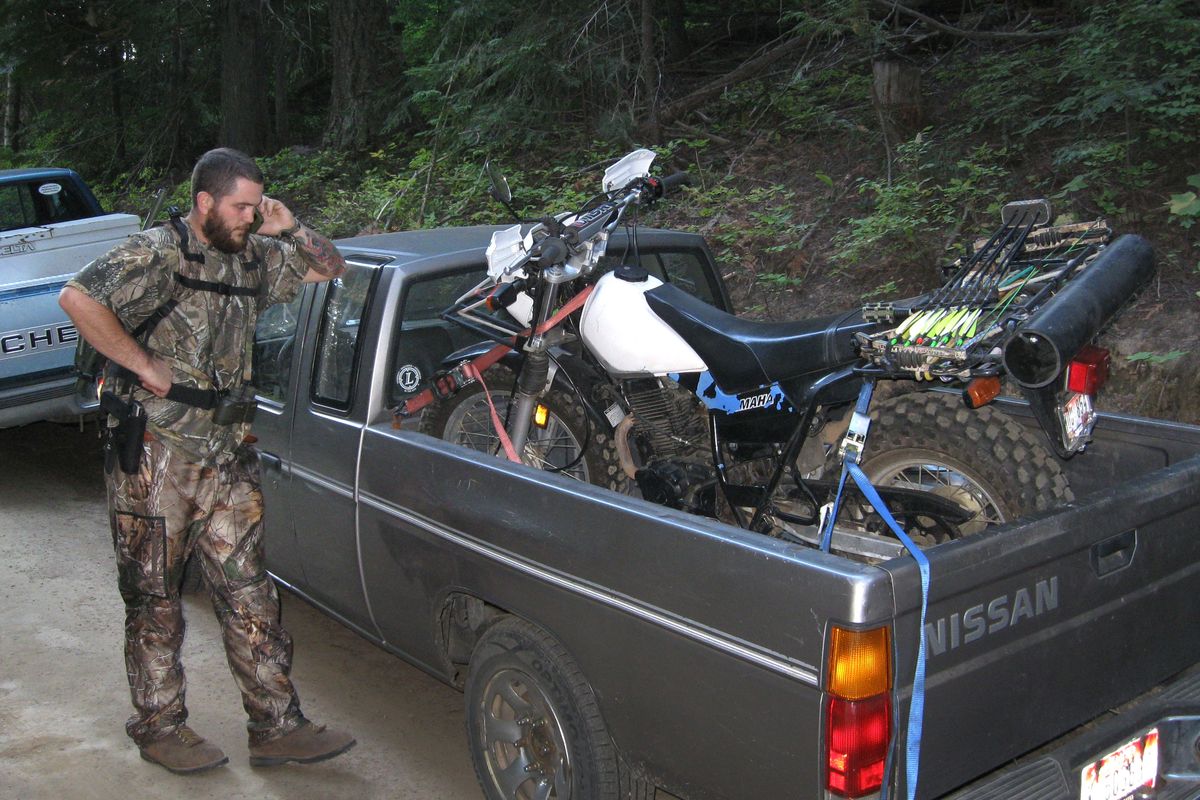Wounded bull eludes bow hunter

A morning of what appeared to be a promising bow hunt Wednesday for a Coeur d’Alene man turned into a day-long ordeal that ended with a hunt he will never forget and will always regret.
Wes Sifford, 24, had earlier in the week scouted an area of the Coeur d’Alene National Forest south of Interstate 90 and found ample signs of elk. He returned Wednesday and parked his truck about an hour before sunrise. Immediately, Sifford said he heard bulls bugling below him.
After waiting a few minutes for enough light to see, Sifford crept down a well-used trail and within about 50 yards of an elk he heard crashing through the underbrush.
“I gave one cow call and here he came,” Sifford said.
Actually, two bulls approached. On the right, a fork-horn spike walked within about 24 yards and began a “stare down.” At the edge of a clearing below Sifford, a five-point bull stepped out looking for the source of his cow call.
The fork horn stood looking directly at Sifford for what seemed like minutes.
“I didn’t feel comfortable taking the straight-on shot,” he said. “I waited to see if I could get a broad-side shot, but he wouldn’t turn.”
As the five point moved closer, Sifford shifted his bow to the left. When he did, the fork horn to his right initially turned broadside.
Sifford drew his bow but felt like he was aiming low. He repositioned himself and aimed for a small window between limbs. He loosed the arrow and heard a distinctive “smack” as the young bull wheeled, jumped over downfall trees and took a few steps out of sight.
But Sifford, who has hunted 11 years and killed several bulls with his bow in the St. Joe River area, said he also remembers seeing a small limb shaking after the shot.
Sifford said he thought he could hear the young bull’s heavy breathing. He cow called a few times and waited several minutes.
Eventually, after the woods went quiet, he approached his arrow. It was red with blood, indicating a pass-through shot. But he then heard what he thought was the young bull making a crash and then nothing.
Unsure of the shot’s placement, he then crept back to his shooting tree, marked it and quietly left the area to allow the elk to lie down and expire, since even mortally wounded elk can run for miles if pushed.
Sifford returned home to his wife and son, who rely on Sifford’s hunting for the excellent meat. After 4 hours, Sifford returned at 11 a.m. with every expectation of finding his young bull.
But when he approached the area of the shot, he only found two or three drops of blood and then nothing in dry tracking conditions that could not have been worse. Several plants had leaves that had begun turning red in splotches that appeared to be blood but were not.
After replaying the scenario dozens of times, Sifford believes that his arrow may have clipped the branch, which deflected it further back in the animal, missing the vital organs.
He called in a friend and they tracked every trail leading in and out of the area until dark, but they were not able to find the bull or any other signs of blood.
“I was blessed enough with the opportunity to shoot him,” an exhausted and dejected Sifford said. “I didn’t do my part by killing him. I feel terrible about that.”